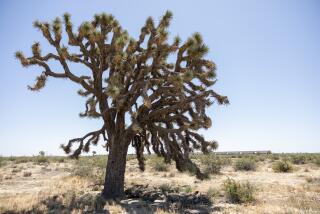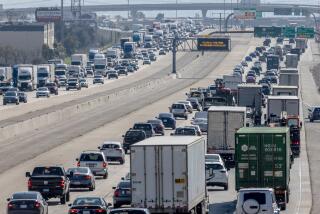San Diego County mountain town Julian is named California’s second dark-sky community
- Share via
JULIAN, Calif. — The scenic San Diego County mountain town of Julian was recently certified as California’s second dark-sky community, following the lead of nearby Borrego Springs.
Residents established the Julian Dark Sky Network in 2016, working with the county for several years to enact an outdoor lighting ordinance that met the standards of the International Dark-Sky Assn.
The result was a detailed policy requiring, among other things, that homes and businesses use specific types of bulbs and timers. Light pollution can drown out views of the night sky while also confusing birds, bats and others nocturnal animals. Bulbs that emit warmer tones are preferred to those featuring a cooler blue spectrum.
“We’re at a threshold point where we can decisively reverse decades of growing regional light pollution and see the emergence of a whole region of dark sky appreciation and preservation,” said Doug Sollosy, founder of the network.
The network plans to organize more year-round astronomy activities for the public, promoting the town as one of the few places in the country where people can see the Milky Way.
Julian is the 13th community to receive the official designation from the international group, formed in 1988. Other certified towns include Flagstaff, Ariz., Ketchum, Idaho, and Torrey, Utah.
“The dedication of the Julian Dark Sky Network ... is significant for all of San Diego County,” said Ruskin Hartley, executive director of the association. “A path forward to accreditation has been opened for unincorporated cities and towns as a result of the network’s efforts.”
Sollosy said he and others had anticipated the process would be as simple as adopting the policies enacted by Borrego Springs. But they quickly learned that the association’s standards had evolved since the desert town was accredited in 2009.
“We thought we could follow in their footsteps and it wouldn’t be too difficult, but what we found out pretty early on is that San Diego County’s lighting code had really become quite antiquated,” Sollosy said.
“The biggest obstacle was figuring out what’s going to work for our businesses while at the same time protect the night sky,” he added. “It was a pretty big challenge.”
The International Dark-Sky Assn. also recognizes the efforts of reserves, sanctuaries and parks. The Anza-Borrego Desert State Park was designated as a dark-sky park in 2018.
Smith writes for the San Diego Union-Tribune.
More to Read
Sign up for Essential California
The most important California stories and recommendations in your inbox every morning.
You may occasionally receive promotional content from the Los Angeles Times.














